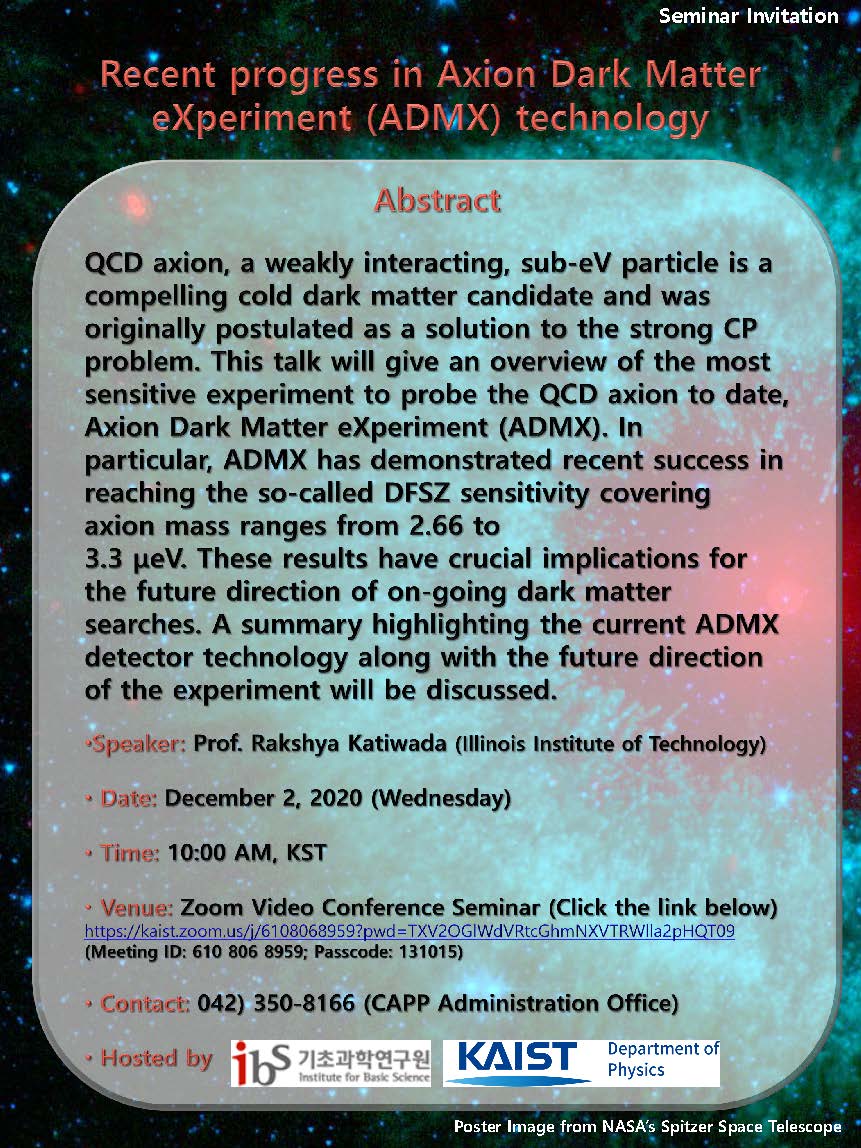Recent progress in Axion Dark Matter eXperiment (ADMX) technology
2020.11.24 15:31
| 날짜 | 2020-12-02 10:00 |
|---|---|
| 일시 | December 2(Wed), 10:00AM |
| 장소 | Zoom |
| 연사 | Prof. Rakshya Katiwada (Illinois Institute of Technology) |
Topic: Recent progress in Axion Dark Matter eXperiment (ADMX) technology
Speaker: Prof. Rakshya Katiwada (Illinois Institute of Technology)
Date: December 2, 2020 (Wednesday)
Time: 10:00 AM
Venue: Zoom Video Conference Seminar (Click the link below)
https://kaist.zoom.us/j/6108068959?pwd=TXV2OGlWdVRtcGhmNXVTRWlla2pHQT09
(Meeting ID: 610 806 8959; Passcode: 131015)
Abstract:
QCD axion, a weakly interacting, sub-eV particle is a compelling cold dark matter candidate and was originally
postulated as a solution to the strong CP problem. This talk will give an overview of the most sensitive experiment
to probe the QCD axion to date, Axion Dark Matter eXperiment (ADMX). In particular, ADMX has demonstrated
recent success in reaching the so-called DFSZ sensitivity covering axion mass ranges from 2.66 to 3.3 μeV.
These results have crucial implications for the future direction of on-going dark matter searches. A summary
highlighting the current ADMX detector technology along with the future direction of the experiment will be
discussed.







